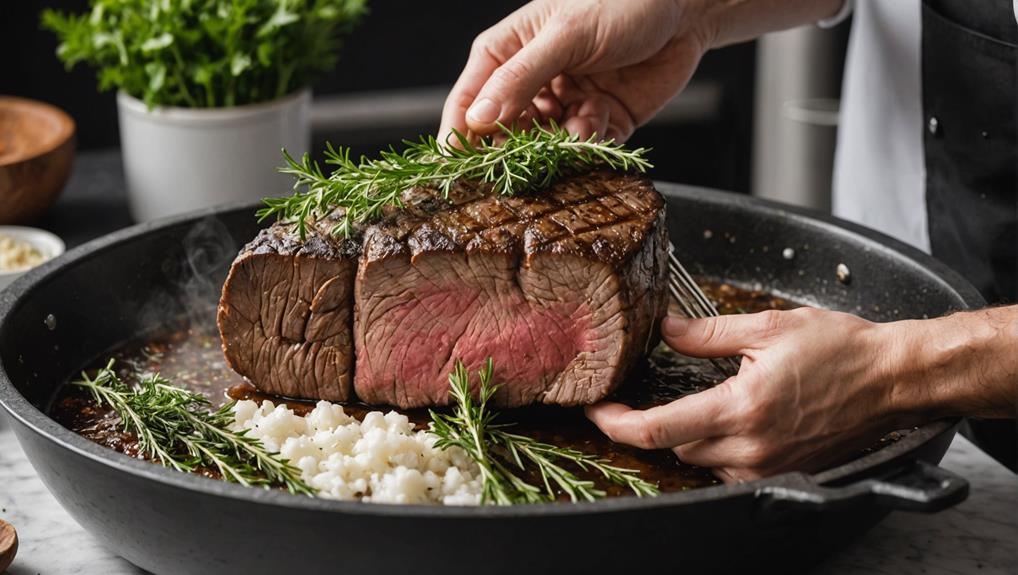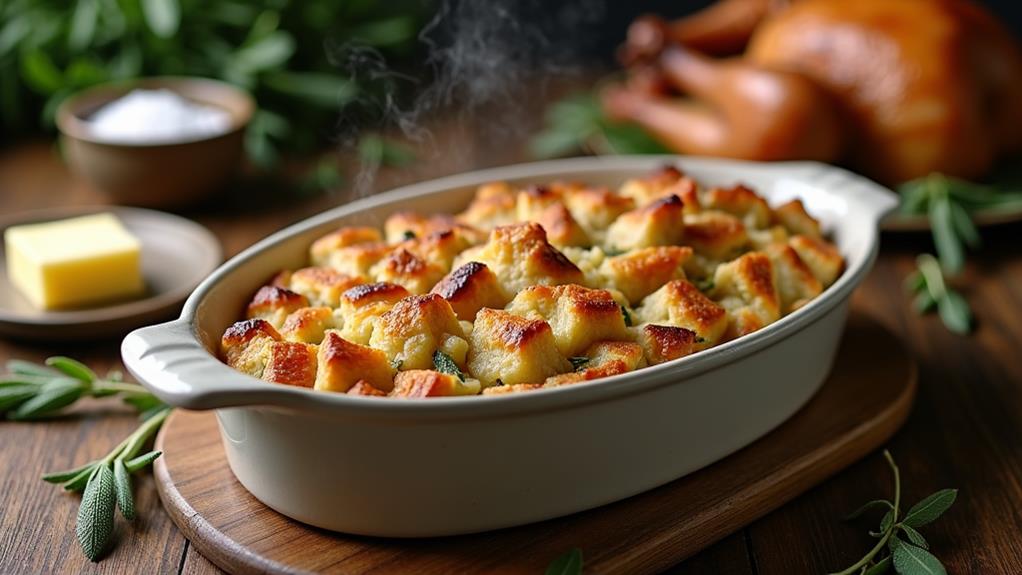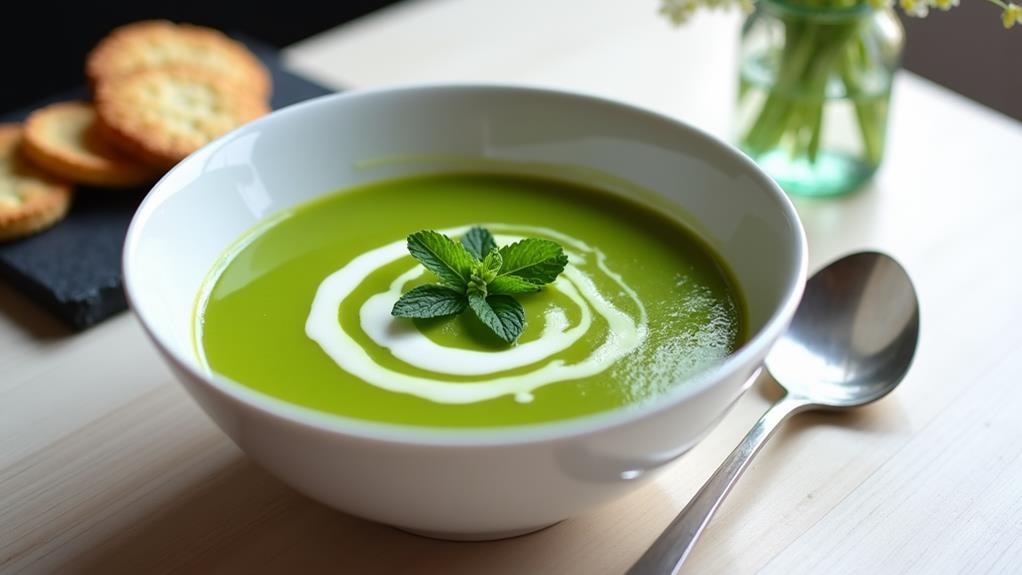To master sous vide cooking, you'll need to focus on precision temperature control, food safety, flavor enhancement, and texture perfection. Maintain water temperatures within ±0.1°F, and use a reliable thermometer to verify. Always fully submerge vacuum-sealed bags and follow recommended cooking times and temperatures. Enhance flavors by generously seasoning meats before sealing, and experiment with aromatics. For tender textures, cook at lower temperatures for extended periods. Plan your meals strategically, aligning cooking times for proteins and vegetables. By implementing these insider tips, you'll achieve restaurant-quality results every time. Discover more techniques to elevate your sous vide game.
Precision Temperature Control Techniques
To nail sous vide cooking, you've got to master precision temperature control. It's the key to achieving even cooking and consistent results every time. Your immersion circulator should maintain water temperature within ±0.1°F, ensuring your food cooks perfectly from edge to edge.
Remember, cooking times and temperatures vary significantly for different proteins. For instance, a medium-rare steak needs 130°F for 1 to 4 hours, while chicken breasts require at least 149°F for the same duration to ensure safety.
To achieve your desired level of doneness, consider the thickness of your food. Add an hour of cooking time for each inch of thickness.
Before vacuum sealing, season the meat and let it marinate for 30 minutes to an hour at room temperature. This step enhances flavor infusion.
Always use a reliable thermometer to verify water temperature, keeping food out of the dangerous 40°F – 140°F zone where bacteria thrive.
By mastering these precision temperature control techniques, you'll elevate your sous vide game and consistently produce restaurant-quality meals.
With practice, you'll master the art of sous vide cooking, impressing your guests with succulent, perfectly cooked dishes every time.
Food Safety Best Practices
While precision temperature control is vital for sous vide cooking, food safety practices are equally important to ensure your culinary creations aren't only delicious but also safe to eat.
To master the art of sous vide, you'll need to prioritize food safety throughout the process. Start by fully submerging your vacuum-sealed bag in the water bath, ensuring even cooking temperatures and preventing bacterial growth. Use a calibrated thermometer to verify that your food reaches safe cooking temperatures, such as 165°F for poultry and 130°F for beef.
Always use clean bags for each new item to avoid cross-contamination, and make sure they're free from air to prevent spoilage. Follow recommended cooking times and temperatures meticulously, as undercooked items can pose health risks.
Once your food is cooked, if you're not consuming it immediately, cool it rapidly and store it in the refrigerator at 40°F or below. This proper storage technique prevents bacterial growth and maintains the quality of your sous vide creations.
Flavor Enhancement Strategies
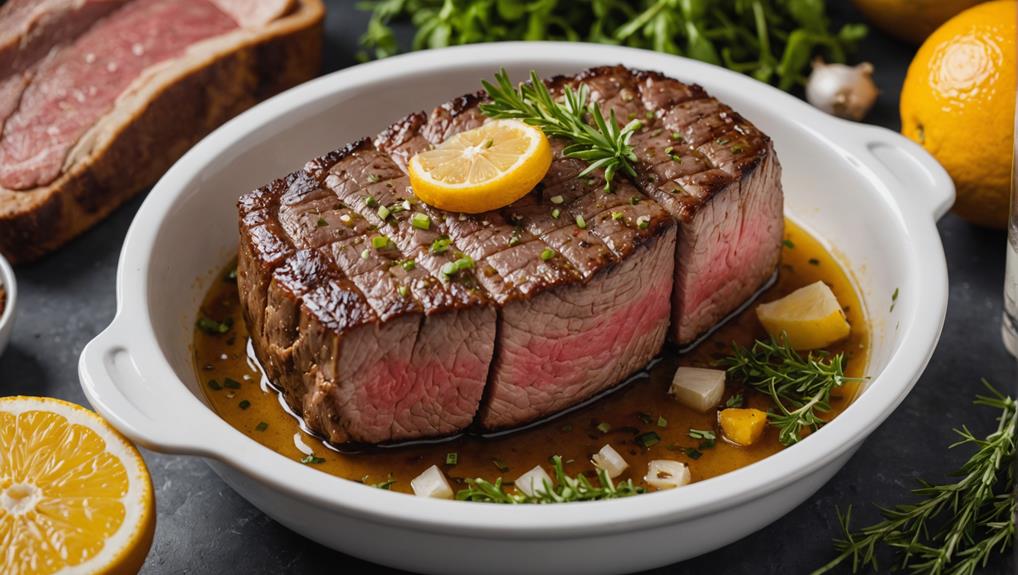
In the realm of sous vide cooking, flavor enhancement is a crucial aspect that can elevate your dishes from good to extraordinary. To maximize taste, you'll want to season your meats generously with a variety of herbs, spices, and aromatics before vacuum sealing. This process infuses flavors deep into the food during cooking, resulting in a more complex and satisfying dish.
Don't forget to incorporate fats like butter or oil into the vacuum bags; they'll not only provide moisture but also enrich the overall flavor profile. Similar to how braised short ribs benefit from a rich sauce, the slow cooking process allows for deeper flavor absorption in sous vide preparations.
For an extra burst of taste, experiment with additional ingredients such as garlic, lemon zest, or fresh herbs inside the bag. These elements will enhance the aromatic qualities of your dish.
Consider using lower-salt brines or marinades prior to cooking to improve tenderness and flavor without overpowering the natural taste of the meat.
Texture Perfection Methods
Precision is the hallmark of sous vide cooking, and nowhere is this more evident than in achieving perfect textures. The sous vide technique's precise temperature control allows you to break down tough connective tissues in meats, resulting in a tender texture that's hard to replicate with traditional methods.
You'll find that cooking at lower temperatures for extended periods enhances moisture retention, yielding juicy chicken and other meats that are cooked to perfection.
With sous vide, you'll never worry about overcooking or undercooking again. The method allows for extended cooking times without compromising texture, ensuring consistent results every time. For example, you can cook a ribeye steak at 130°F for 1-4 hours, achieving perfectly cooked medium-rare doneness without drying out.
Don't forget about vegetables! Sous vide maintains their vibrant colors and crisp textures, with shorter cooking times ensuring they remain tender yet firm.
To elevate your culinary creations, employ finishing techniques like searing sous vide-cooked meats in a hot pan. This creates a desirable crust while preserving the juicy interior, exemplifying texture contrast in your final dish.
Advanced Meal Planning Tips
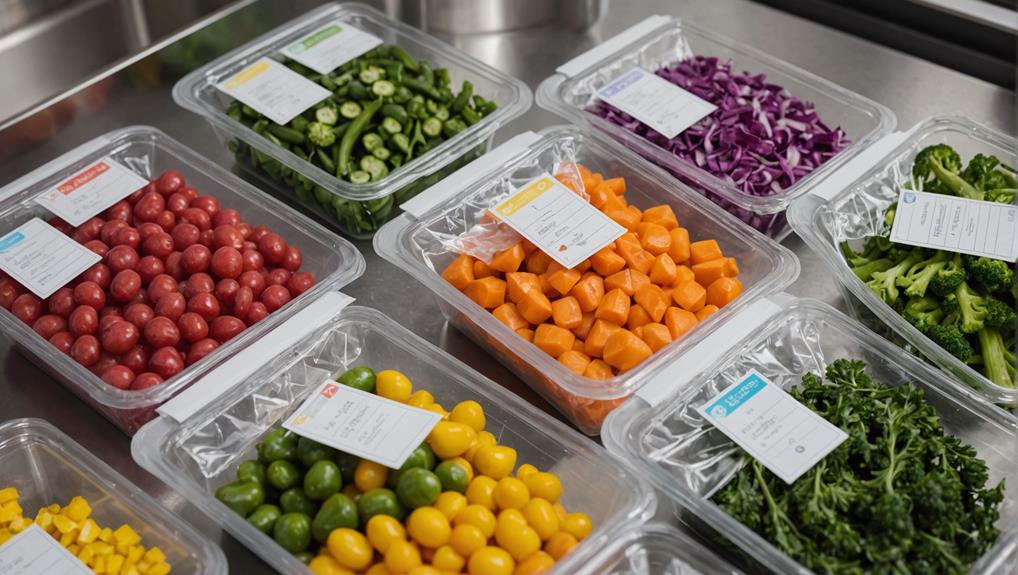
Mastering texture perfection with sous vide cooking opens up exciting possibilities for advanced meal planning.
To elevate your culinary game, start by strategically planning your sous vide meals. Consider the ideal cooking times and temperatures for each ingredient, allowing you to cook proteins and vegetables simultaneously when their timings align. Utilize a meal prep calendar to organize your cooking sessions in advance, ensuring you've got all necessary ingredients and equipment at the ready.
Take your meal planning to the next level by batch cooking proteins in bulk. Store them in vacuum-sealed bags in the freezer for quick and easy meal assembly throughout the week.
Don't forget to label your bags with cooking dates and contents to streamline your process and avoid confusion. To enhance flavours without adding prep time during busy weekdays, incorporate marinades or seasoning blends into your planning. This approach allows for variety in your meals while maintaining efficiency.
Frequently Asked Questions
Can You Overdo Sous Vide?
Yes, you can overdo sous vide. While temperature control minimizes overcooking risks, extended cooking times can affect food texture. To maintain flavor infusion and safety, use recommended times for different food types and invest in quality sous vide equipment.
What Are 5 Tips for Using Sous Vide?
Embark on a culinary voyage! Master sous vide basics: infuse flavors pre-sealing, maintain precise temperature control, ensure food safety with proper temps, choose quality equipment, and experiment with diverse recipes. Don't rush cooking times; it's your ticket to innovation.
What Is the Best Sous Vide Time?
You'll find the best sous vide time varies by ingredient. For tender meat, veggies, and optimal flavor, consult sous vide recipes. Use proper equipment and temperatures, ensuring safety in your sous vide baths. Experiment with timing to revolutionize your cooking.
Does Sous Vide Lose Nutrients?
You'll love sous vide's nutrient retention benefits. Its precision cooking and temperature control preserve vitamins and minerals better than traditional methods. Plus, you'll enjoy enhanced flavors, improved textures, and versatile meal prep options with this innovative cooking technique.
Final Thoughts
You've now dived deep into the world of sous vide cooking, equipping yourself with the tools to create culinary masterpieces. By mastering temperature control, prioritizing food safety, enhancing flavors, perfecting textures, and planning meals strategically, you're poised to elevate your kitchen game. Remember, practice makes perfect, and soon you'll be cooking like a seasoned pro. As you continue to experiment, you'll find that sous vide isn't just a cooking method; it's a gateway to a whole new realm of gastronomic possibilities.

